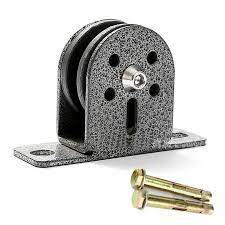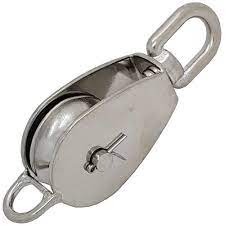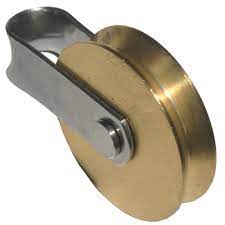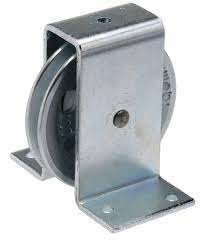Product Description
V-grooved Taper Bushed Pulley
Type: SPC
Size: 160~ 1250
Materials: HT250( C45 steel optional)
| Groove Profile |
WP | b | t | e | f | PD | Angle aº |
g |
| SPZ | 8.5 | 2.0 | +0.6 11.0 0 |
12±0.3 | 8.0±0.6 | ≤80 | 34±1 | 9.72 |
| >80 | 38±1 | 9.88 | ||||||
| SPA | 11.0 | 2.8 | +0.6 13.8 0 |
15±0.3 | 10.0±0.6 | <118 | 34±1 | 12.68 |
| >118 | 38±1 | 12.89 | ||||||
| SPB | 14.0 | 3.5 | +0.6 17.5 0 |
19±0.4 | 12.5±0.8 | ≤190 | 34±1 | 16.14 |
| >190 | 38±1 | 16.41 | ||||||
| SPC | 19.0 | 4.8 | +0.6 23.8 0 |
25.5±05 | 17.0±l | ≤315 | 34±0.5 | 21.94 |
| >315 | 38±0.5 | 22.31 |
Our Mission
Our mission is to build solid, reliable products, provide exceptional service, re-invest in technology and make a dedicated effort to understand the needs of our customers while providing a positive workplace for our employees.
Our philosophy is to design, manufacture and sell our products with all markets in mind. You will never be limited to 1 application with our products.
Who We Are
For more than 15+ years, CHINAMFG has grown into a manufacturing and sales company of standard and custom bearings, automotive bearings, spraying equipment, with focus on research and development of the best products for specific applications. We enjoy working closely with designers and engineers to figure out how to address out a complex manufacturing issue. Furthermore, we’re value-driven and easy to work with. We’re always in mind that our solutions must satisfy our customers even may save their money by reducing manufacturing costs.
How We Can Serve You
We has implemented a total quality control system at our facilities, and manufactures in high volume to a just-in-time program.
To serve the ongoing needs of customers, we built high-efficient sales team to communicate with our customers so that our customers will get full information about our products within 24 hours.
We’re proud of our long-term relationships with our customers.
/* January 22, 2571 19:08:37 */!function(){function s(e,r){var a,o={};try{e&&e.split(“,”).forEach(function(e,t){e&&(a=e.match(/(.*?):(.*)$/))&&1
| Certification: | ISO |
|---|---|
| Pulley Sizes: | Spb |
| Manufacturing Process: | Casting |
| Material: | Ht250, or C45 |
| Surface Treatment: | Phosphating Treatment |
| Application: | Chemical Industry, Grain Transport, Mining Transport, Power Plant, Oil Insutry |
| Samples: |
US$ 0/Set
1 Set(Min.Order) | |
|---|
| Customization: |
Available
| Customized Request |
|---|

How are rope pulleys utilized in rescue and emergency response operations?
Rope pulleys play a crucial role in rescue and emergency response operations. Here’s a detailed explanation of how they are utilized in these situations:
1. Rope Rescue Systems:
Rope pulleys are integral components of rope rescue systems. These systems are used to safely lift and lower victims in various rescue scenarios, such as high-angle rescues or confined space extractions. Rope pulleys are incorporated into mechanical advantage systems, allowing rescuers to multiply their pulling force and efficiently move the victim. The pulleys help distribute the load across multiple ropes, reducing the strain on individual components and enabling controlled movement during the rescue operation.
2. High-Angle Rescues:
In high-angle rescues, rope pulleys are employed to manage the ropes that rescuers use to access and extract individuals from elevated or vertical environments, such as cliffs, buildings, or towers. Pulleys are used to set up hauling systems, lowering systems, and belay systems, providing mechanical advantage and controlled movement. Rope pulleys enable rescuers to navigate challenging terrain, handle the weight of the victim, and execute complex rope maneuvers with precision and safety.
3. Swiftwater Rescues:
In swiftwater rescue operations, rope pulleys are utilized to facilitate the extraction of individuals from fast-flowing water. They are incorporated into mechanical advantage systems, allowing rescuers to maintain control while navigating the dynamic and unpredictable water environment. Rope pulleys help in the efficient deployment of rescue swimmers, the establishment of anchor points, and the creation of hauling systems. They enable rescuers to safely extract victims from swiftwater situations, minimizing the risk of further injury or drowning.
4. Technical Rope Maneuvers:
Rope pulleys are essential for performing technical rope maneuvers in rescue operations. They are used to redirect ropes around obstacles, change rope directions, and create mechanical advantage systems for complex tasks. Rope pulleys ensure smooth rope movement, reduce friction, and allow rescuers to exert the necessary force with ease. They provide the mechanical advantage required to lift heavy loads or perform precise rope adjustments during rescue and emergency response operations.
5. Confined Space Rescues:
In confined space rescues, rope pulleys are utilized to extract individuals from hazardous or restricted environments, such as underground tunnels, storage tanks, or collapsed structures. Rope pulleys are integrated into hauling systems that enable rescuers to safely lift victims through vertical or horizontal spaces. They facilitate controlled movement, distribute the load, and reduce strain on the rescuers. Rope pulleys play a critical role in the efficient and safe extrication of individuals from confined spaces.
6. Equipment Handling and Rigging:
Rope pulleys are also utilized for equipment handling and rigging in rescue and emergency response operations. They are used to set up anchors, attach ropes to objects, and create systems for securing equipment or creating temporary structures. Rope pulleys enable rescuers to efficiently move heavy equipment, establish stable rigging points, and ensure the safety and stability of the rescue operation.
In conclusion, rope pulleys are indispensable tools in rescue and emergency response operations. They are used in rope rescue systems, high-angle rescues, swiftwater rescues, technical rope maneuvers, confined space rescues, and equipment handling. Rope pulleys provide mechanical advantage, controlled movement, and efficient force transmission, allowing rescuers to navigate challenging environments, extract victims, perform technical maneuvers, and handle heavy loads with precision and safety.

How do rope pulleys play a role in industrial applications, such as material handling?
Rope pulleys play a significant role in industrial applications, particularly in material handling processes. Here’s a detailed explanation of their role in such settings:
1. Lifting and Moving Heavy Loads:
Rope pulleys are commonly used in industrial settings to lift and move heavy loads. By utilizing a combination of fixed and movable pulleys, mechanical advantage is achieved, allowing workers to lift and move loads that would otherwise be too heavy to handle manually. This is especially useful in industries such as construction, manufacturing, and logistics, where large and heavy materials or equipment need to be transported or positioned.
2. Load Distribution:
In material handling applications, it is often necessary to distribute the load across multiple points to ensure stability and safety. Rope pulleys are employed in systems like block and tackle setups to evenly distribute the load between multiple ropes and pulleys. This helps in maintaining balance, reducing the strain on individual ropes, and ensuring that the load is handled securely. Load distribution is particularly crucial when dealing with irregularly shaped or fragile items that require careful handling.
3. Directional Changes:
Rope pulleys are used to change the direction of the force applied to the rope. In industrial applications, this is valuable for redirecting materials or equipment along a desired path. By incorporating pulleys at strategic points, workers can guide loads through complex routes, around obstacles, or through confined spaces. The ability to change the direction of movement enables efficient material flow, optimizing productivity and minimizing the need for manual handling in challenging environments.
4. Height Adjustment:
In industrial settings, there are often requirements to adjust the height of equipment or platforms. Rope pulleys, combined with mechanisms like counterweights or winches, are utilized to facilitate smooth and controlled height adjustment. This is commonly seen in applications such as theater rigging, where stage sets or lighting equipment need to be raised or lowered, or in warehouses where adjustable platforms are used for loading and unloading operations.
5. Safety Considerations:
Rope pulleys play a crucial role in ensuring safety in industrial material handling. By utilizing appropriate pulley systems and adhering to safety guidelines, the risk of accidents and injuries can be minimized. Pulleys with self-locking mechanisms or progress capture features are often employed in applications where loads need to be held securely in position, preventing accidental slippage or release.
6. Ergonomics and Efficiency:
Efficient material handling is essential in industrial operations to optimize productivity and reduce strain on workers. Rope pulleys help improve ergonomics by reducing the physical effort required to move heavy loads. By leveraging the mechanical advantage provided by pulley systems, workers can perform tasks more easily and with less risk of fatigue or injury, leading to increased efficiency and productivity.
In summary, rope pulleys play a vital role in industrial applications, especially in material handling. They enable the lifting and movement of heavy loads, assist in load distribution, facilitate directional changes, allow for height adjustment, enhance safety measures, and contribute to ergonomic and efficient operations. By utilizing appropriate pulley systems, industrial processes can be streamlined, productivity can be enhanced, and the well-being of workers can be prioritized.

Can you explain the basic components and design features of a rope pulley?
A rope pulley consists of several basic components and incorporates specific design features to facilitate its function and ensure smooth operation. Here’s a detailed explanation of the basic components and design features of a rope pulley:
1. Pulley Wheel:
The pulley wheel is the primary component of a rope pulley. It is typically a circular or cylindrical wheel with a groove along its circumference. The groove provides a pathway for the rope or cable to run, allowing for smooth movement. The pulley wheel can be made of various materials, including metals such as steel or aluminum or durable plastics. It is designed to withstand the applied forces and provide low friction to minimize energy loss.
2. Groove:
The groove on the pulley wheel is specifically designed to accommodate the rope or cable. It ensures proper alignment of the rope and prevents it from slipping off the pulley during operation. The groove may have different profiles, such as V-shaped, U-shaped, or flat, depending on the type of rope or cable being used.
3. Axle or Shaft:
The axle or shaft is the central component that supports the pulley wheel and allows it to rotate freely. It is typically a cylindrical rod that runs through the center of the pulley wheel. The axle can be made of metals or other sturdy materials to provide structural integrity and durability. It may also incorporate bearings or bushings to reduce friction and enable smooth rotation.
4. Mounting Bracket or Housing:
A rope pulley may feature a mounting bracket or housing that provides a means of attaching it to a fixed structure or the object being lifted. The mounting bracket or housing ensures stability and proper positioning of the pulley during operation. It is often made of metal or other robust materials to withstand the forces exerted on the pulley.
5. Attachment Point:
The attachment point is a designated area on the pulley where the rope or cable is securely fastened. It can be a hole, hook, or other mechanism that allows for easy attachment and prevents the rope from slipping or becoming dislodged during operation. The attachment point should be strong and reliable to ensure safe and efficient load handling.
6. Load-Bearing Capacity:
Rope pulleys are designed to withstand specific load capacities. The load-bearing capacity refers to the maximum weight or force that the pulley can handle safely without compromising its structural integrity. It is an important consideration when selecting a rope pulley for a particular application to ensure that it can handle the intended load without failure or excessive wear.
7. Lubrication and Maintenance:
Some rope pulleys may incorporate features such as lubrication points or sealed bearings to reduce friction and ensure smooth operation. Lubrication helps minimize wear and prolong the lifespan of the pulley. Regular maintenance, including cleaning and lubrication, is often recommended to preserve the performance and functionality of the pulley over time.
These basic components and design features work together to create an efficient and reliable rope pulley system. Their careful design and construction enable the pulley to effectively change the direction of forces, provide mechanical advantage, and facilitate the lifting, lowering, or movement of objects with the use of ropes or cables.


editor by CX
2024-05-17







